I had left off my data performance testing last time wondering why the iperf UDP data rate was so low. Well, @aenertia on Twitter gave me a hint: you need to specify the amount of bandwidth you want to test on the client side, otherwise the UDP test defaults to 1 Mbit/s! So, just an average case of operator error. :) The iperf on ESP32 example code is too simple and doesn't provide / need this option, and I haven't played enough with this kind of stuff before to know things like that.
Here are the results for UDP when the wESP32 is the client (outgoing traffic):
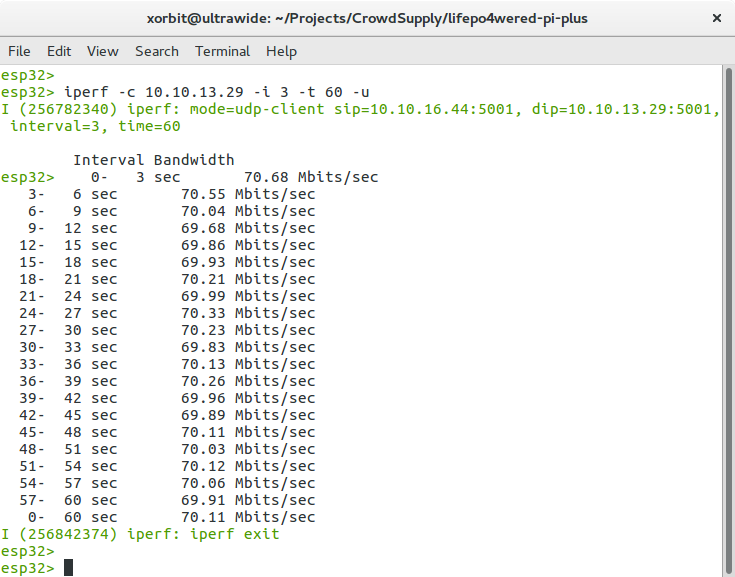
Around 70 Mbit /s, nice!
So to test server, I used the following command on the client:
iperf -c 10.10.16.44 -i 3 -t 60 -u -b 100m
This sets the target bendwidth to 100 MBit/s.
Here are the results for UDP when the wESP32 is the server (incoming traffic):
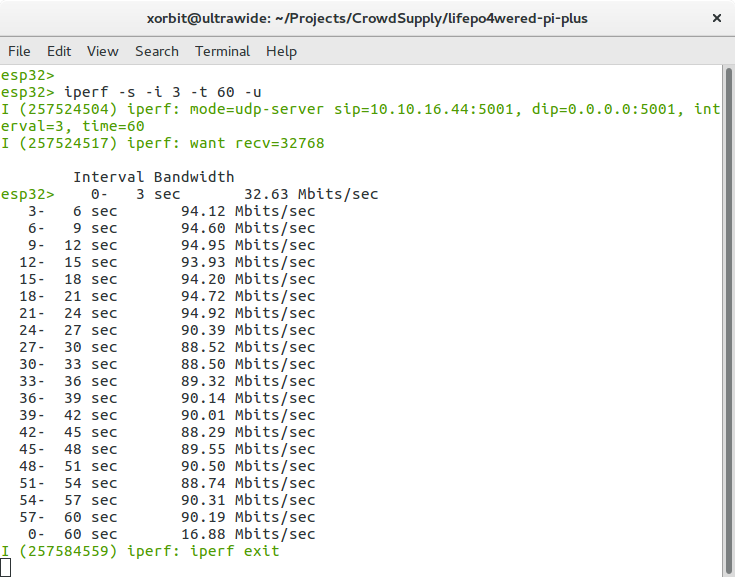
Wow, >90 Mbit/s! That's close to the theoretical maximum!
Now I'm pretty sure that from the moment the ESP32 would start to do anything with this data other than throw it away, the data rate would go down, but it's still nice to see that the Ethernet data system as implemented on the wESP32 performs very well.
One last thing left on my list to validate the design was to test power performance when the 5V power option is selected by bridging the solder jumper. As mentioned before, the whole power system is optimized for 12V power, and the 5V option was a little bit of an afterthought but it could be useful to many people. So how does it do?
In my first test I was really pushing it:
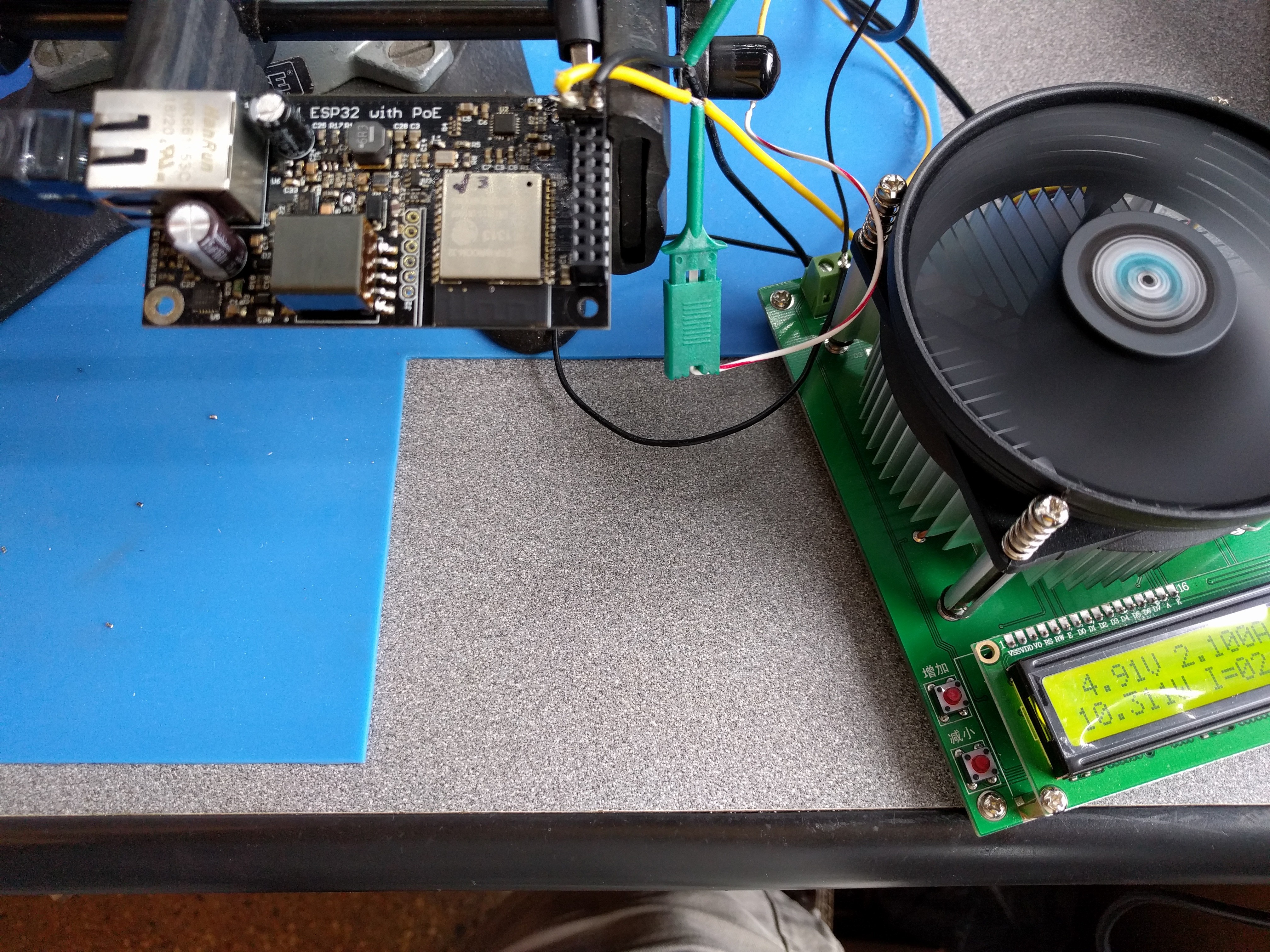
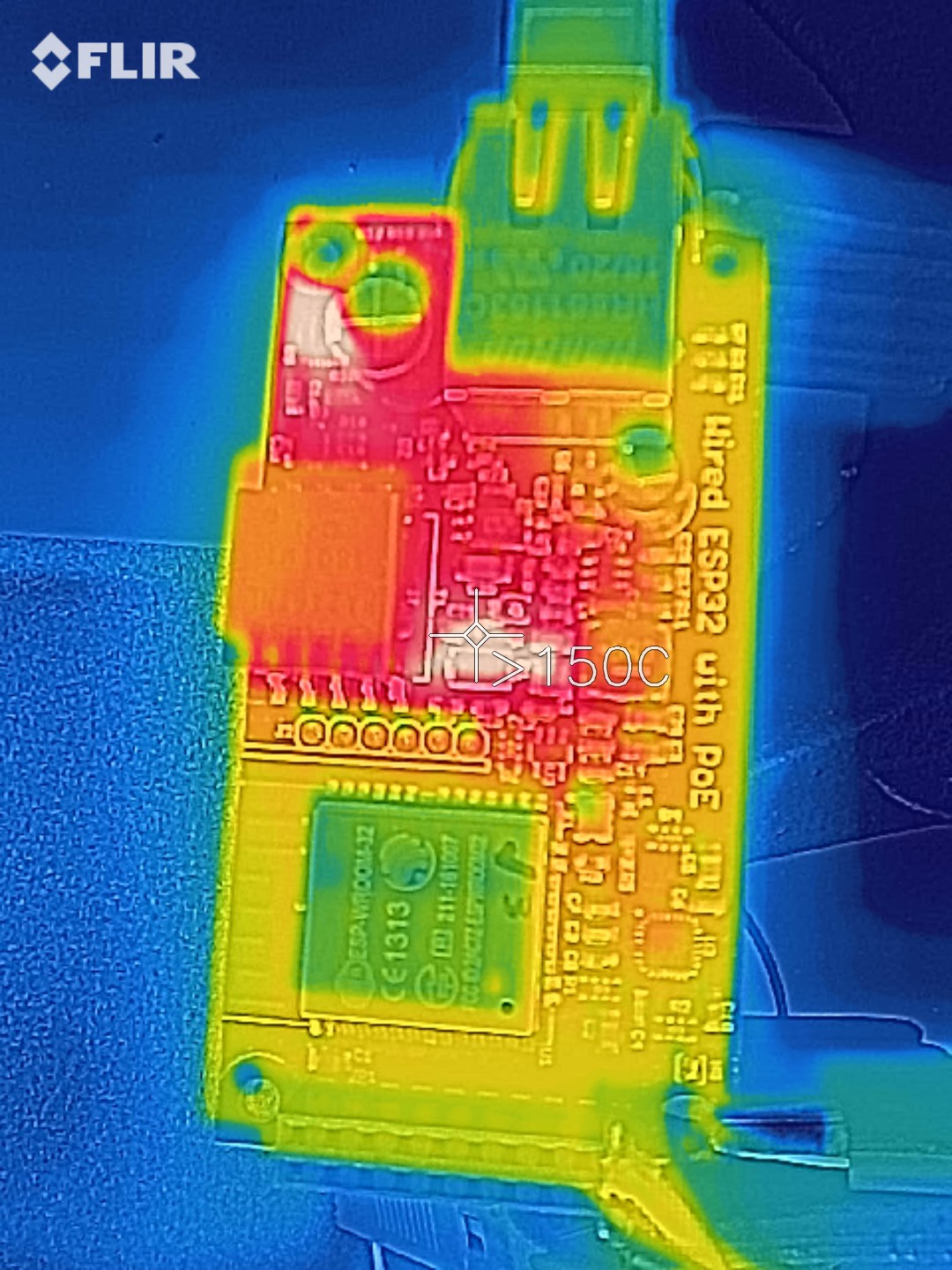
Trying to push >2A through a power path that was designed for 1A: not a good idea. That poor diode was frying, but it lived. So, intermittent 10W may be possible at 5V, but don't run it like this continuously.
Here's a more moderate test:
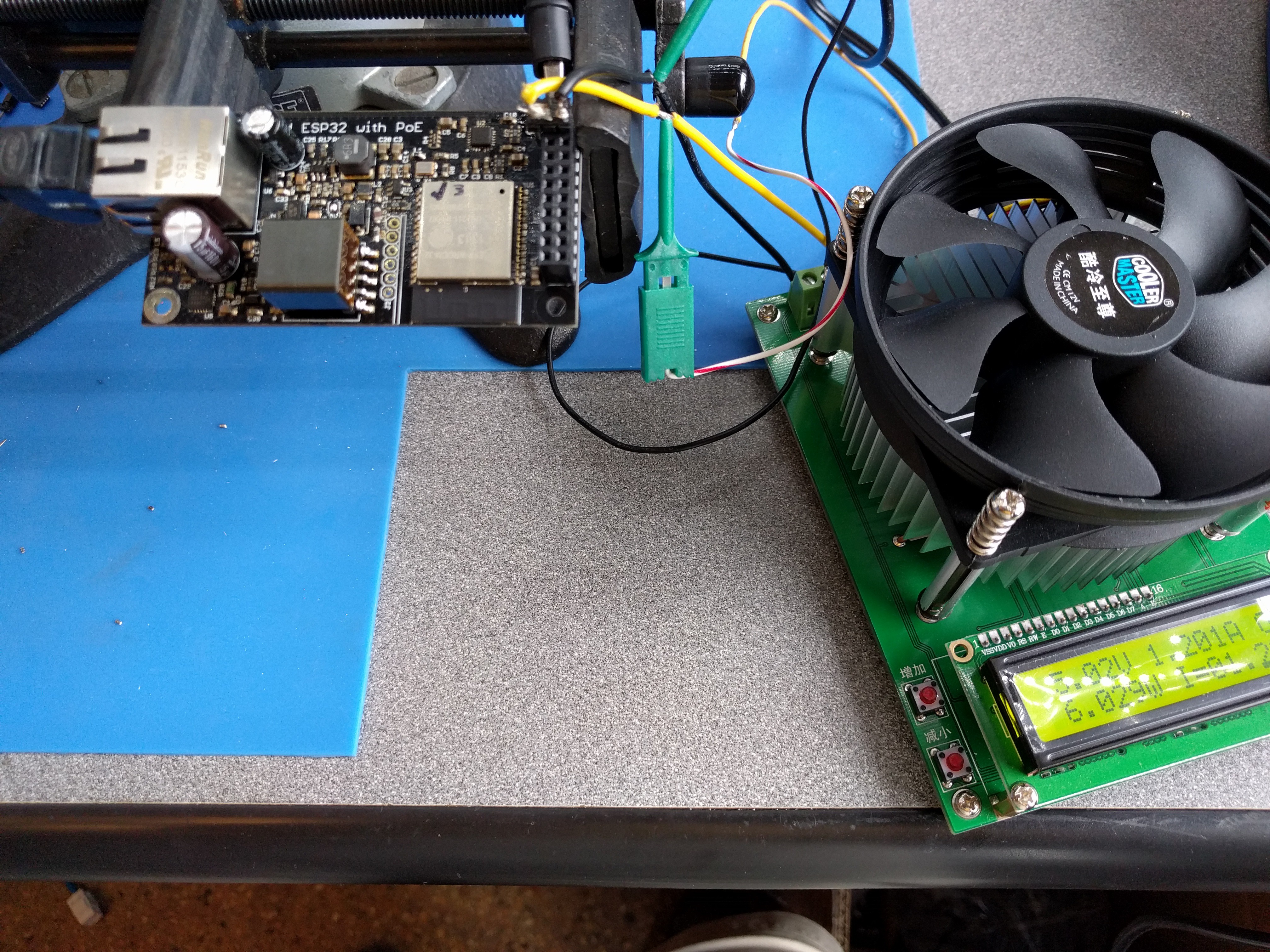
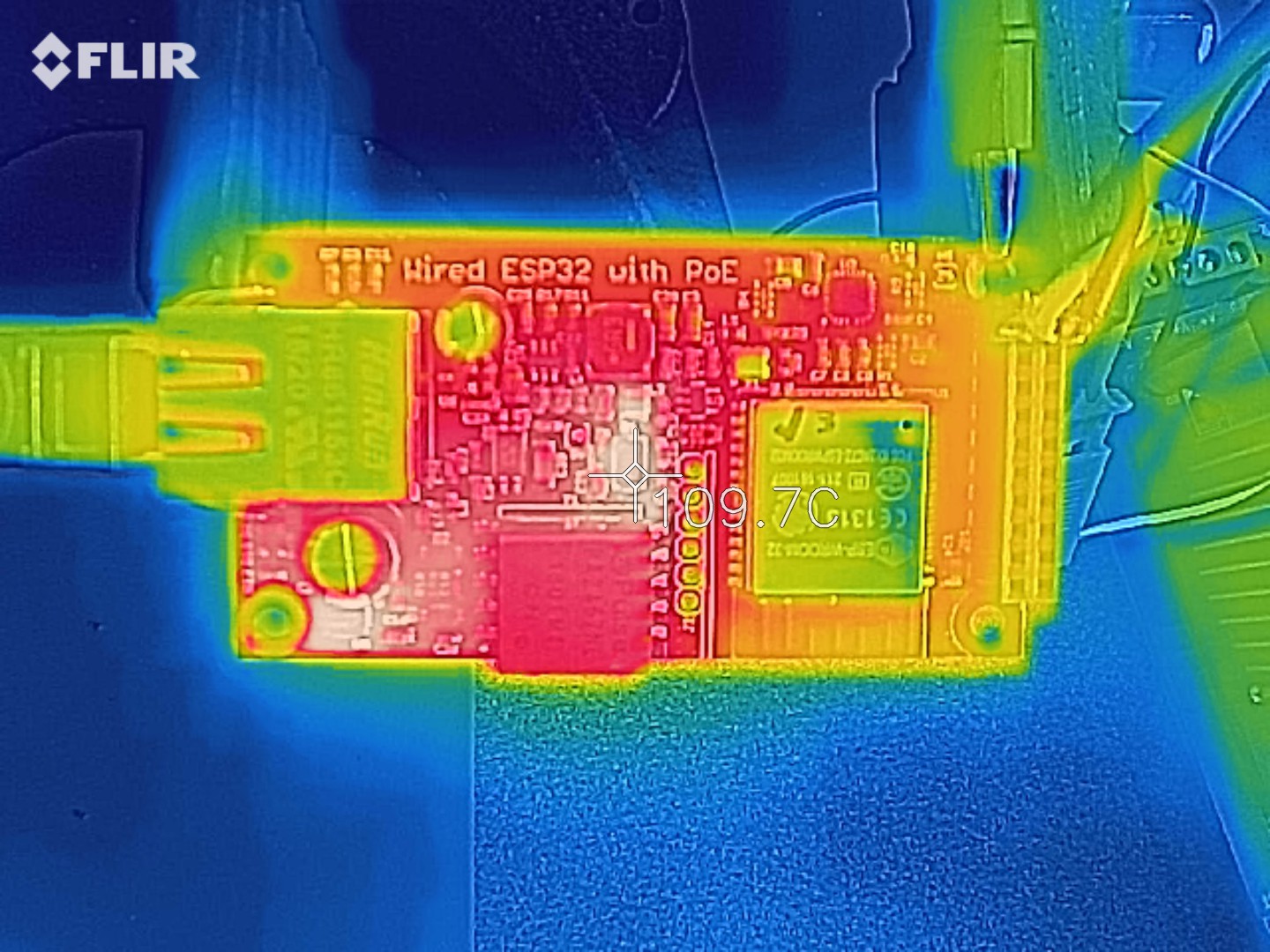
That's better. At 6W output (1.2A), the diode temperature isn't so bad. Still, when running at 5V, your continuous average load should probably be kept below 5W.
These results are fine though. If you need high power, use 12V. It keeps the currents much more reasonable. If you really need high power at 5V, add your own buck converter. The on-board option for 5V will likely still be very useful for the majority of people who need 5V in their system though. 5V sensors, keypads, displays, etc. usually don't need that much power.
 Patrick Van Oosterwijck
Patrick Van Oosterwijck
Discussions
Become a Hackaday.io Member
Create an account to leave a comment. Already have an account? Log In.